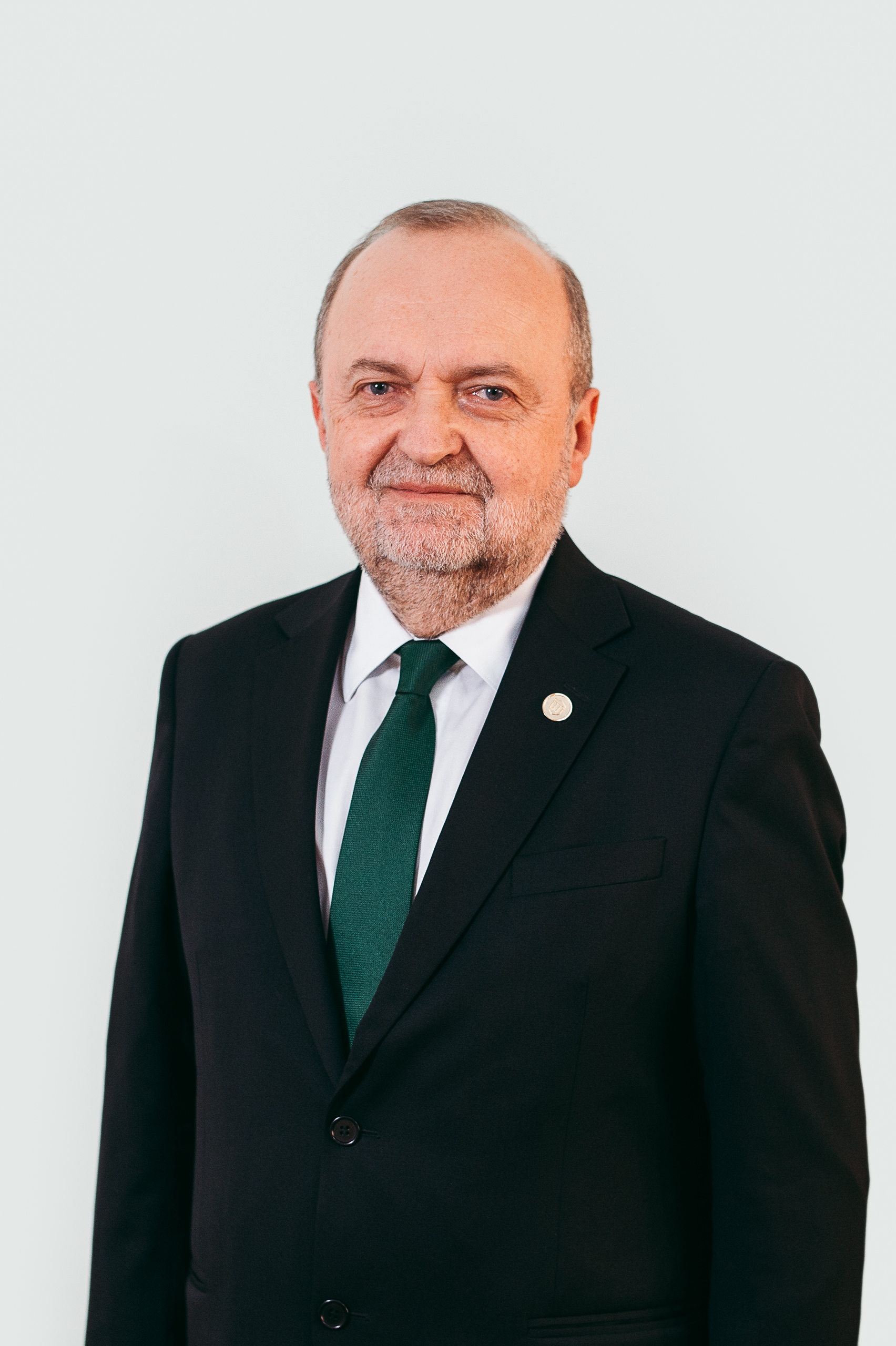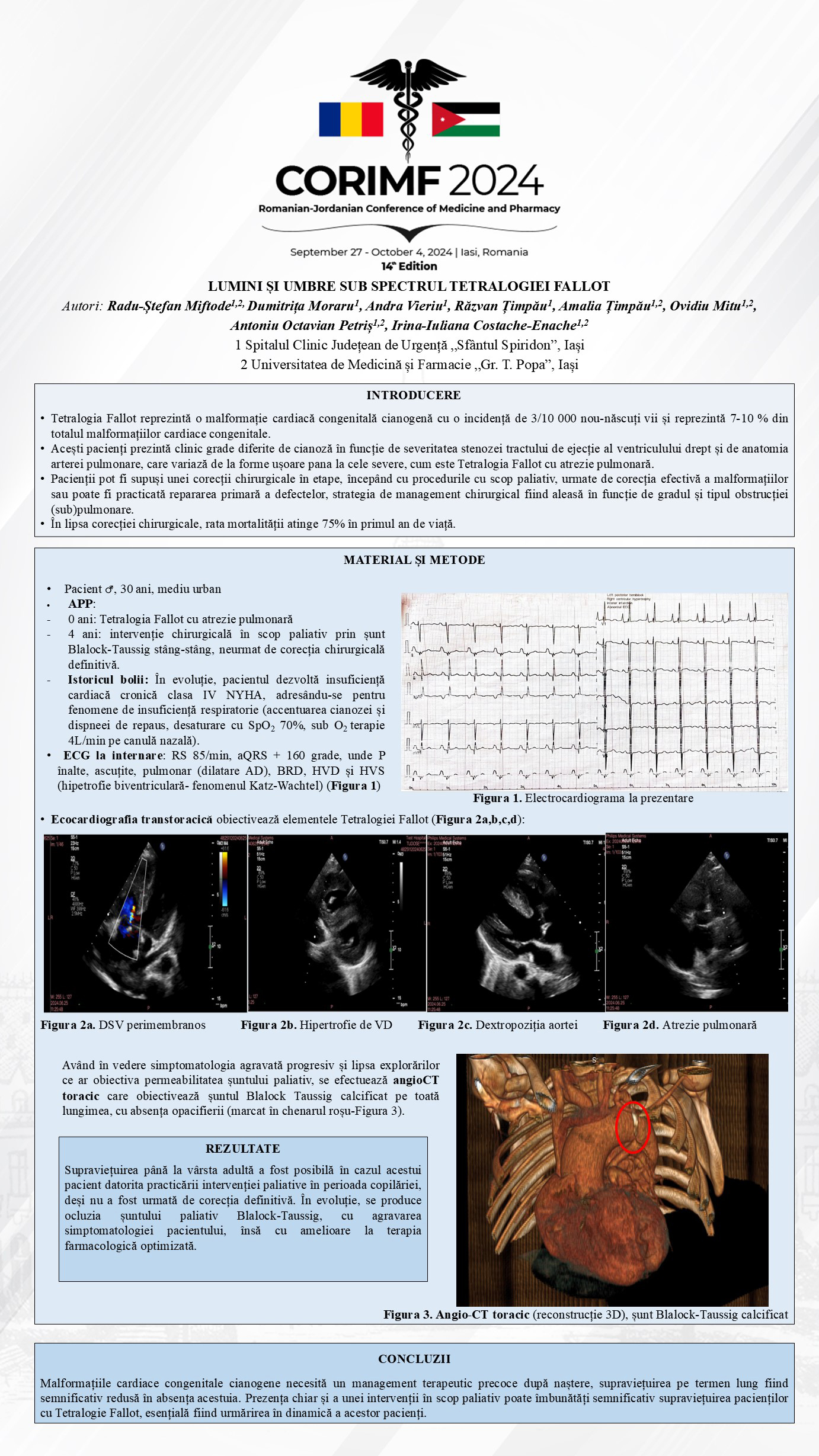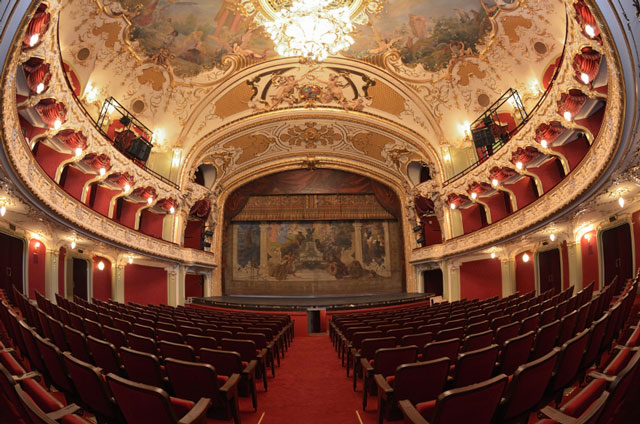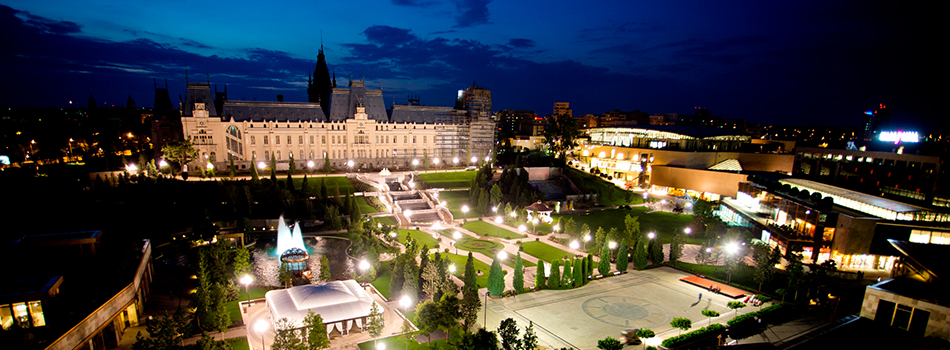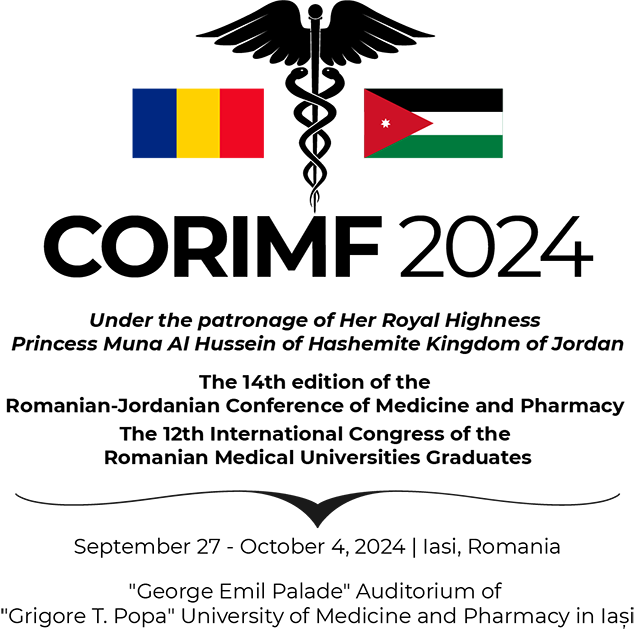
Welcome back to Iasi!
“Grigore T. Popa” University of Medicine and Pharmacy of Iaşi, as an organizer and the Association of Jordanian Graduate Doctors of Romania, as a partner, have the great pleasure of welcoming to the 14th edition To the Romanian-Jordanian Congress of Medicine and Pharmacy.
The event will be held from September 27 to October 4, 2024, in our University and aims to strengthen the bilateral relations between Romania and the Hashemite Kingdom of Jordan through the cooperation network created in the medical field and through the contribution of some reference specialists.
This event creates opportunities for participants to present and share experiences, with lecturers being distinguished members of the medical and academic community, both from Romania and from the Hashemite Kingdom of Jordan.
We are confident that your presence will add value to this event.
Viorel Scripcariu MD, PhD
Rector of the University of Medicine and Pharmacy “Grigore T. Popa” Iași
President of Romanian-Jordanian Congress of Medicine and Pharmacy
Committees
ORGANIZING COMMITTEE from Romania
Rector
Professor IRINA DRAGA CARUNTU
President of the University Senate
Professor RADU ILIESCU
Vice-Rector for Strategy
Professor LUMINITA SMARANDA IANCU
Vice-rector for Postgraduate Education
Professor Camelia-Margareta BOGDĂNICI
Vice-Rector for Clinical Hospital Liaison
Professor IONELA LACRAMIOARA SERBAN
Vice-Rector for Undergraduate and Master’s Education
Professor GEORGETA-LILIANA FOIA
Vice-Rector for International Academic Cooperation and Partnerships
Professor ADRIAN CONSTANTIN COVIC
Vice-Rector for Research
Professor IRINA-IULIANA COSTACHE-ENACHE
Vice-Rector for Student Relations, Quality Management, and Academic Assessment
Professor MONICA HANCIANU
Head of the Doctoral School
Ing. MARIA ARHIP
General Administrative Director
ANDREEA DOBREA IACOBESCU
Head of the International Relations Office
CONSTANTA IVONA BURDUJA
Head of Communication and University Marketing Office
SCIENTIFIC COMMITTEE from Romania
Professor VIOREL SCRIPCARIU
Rector
Professor IRINA DRAGA CARUNTU
President of the University Senate
Professor RADU ILIESCU
Vice-Rector for Strategy
Professor LUMINITA SMARANDA IANCU
Vice-rector for Postgraduate Education
Professor Camelia-Margareta BOGDĂNICI
Vice-Rector for Clinical Hospital Liaison
Professor IONELA LACRAMIOARA SERBAN
Vice-Rector for Undergraduate and Master’s Education
Professor GEORGETA-LILIANA FOIA
Vice-Rector for International Academic Cooperation and Partnerships
Professor ADRIAN CONSTANTIN COVIC
Vice-Rector for Research
Professor IRINA-IULIANA COSTACHE-ENACHE
Vice-Rector for Student Relations, Quality Management, and Academic Assessment
Professor MONICA HANCIANU
Head of the Doctoral School
Associate Professor ANTON KNIELING
Dean of the Faculty of Medicine
Professor MONICA SILVIA TATARCIUC
Dean of the Faculty of Dental Medicine
Professor LENUTA PROFIRE
Dean of the Faculty of Pharmacy
Professor ANCA IRINA GALACTION
Dean of the Faculty of Medical Bioengineering
Associate Professor IONUT NISTOR
Vice-Dean of the Faculty of Medicine
ORGANIZING COMMITTEE from Jordan
Dr. Aref AbuAlsundos
Dr. Ali Al-Moumani
Dr. Alladin Al-Amad
Dr. Mohamed Abu Zaid
Dr. Mohamed Kharabsheh
Dr. Basam Alshlul
Dr. Walid Nassar
Dr. Ahmad Alhiari
Dr. Hanan Droubi
Dr. Hussein Mohamed Obeidat
SCIENTIFIC COMMITTEE from Jordan
Dr. Alladin Al-Amad
Dr. Mohamed Abu Zaid
Dr. Ahmad AlHawarat
Dr. Walid Nassar
Dr. Ali Al-Moumani
Presentations Templates
Please use these templates for the papers you will present as part of the scientific program at CORIMF 2024.
General Program
September 27, 2024
Arrival of guests from Jordan
September 28, 2024
University Hospital visits
September 29, 2024
University tour (Faculties, Research institutes, Anatomy Institute, University’s museums)
September 30, 2024
10:00 – 11:00 – Registration (handing out materials + Coffee break)
11:00 – 13:00 – Official Opening
13:00 – 15:00 – Lunch break
15:00 – 18:00 – Session I
October 1, 2024
10:00 – 13:00 – Session II + Coffee break
13:00 – 15:00 – Lunch break
15:00 – 18:00 – Session III
19:00 – Festive Dinner
October 2, 2024
10:00 – 13:00 – Session IV+ Coffee break
13:00 – 15:00 – Lunch break
15:00 – 16:00 – Closing remarks
October 3, 2024
Iasi city tour (Palace of Culture, Botanical Garden)
October 4, 2024
Departure of guests from Jordan
Best ePoster of CORIMF 2024
The evaluation committee for the e-Poster presentations, consisting of Professor Adrian Covic, Professor Abdelkarim Saleh Suleiman Al-Oweidi, and Associate Professor Ionuț Nistor, has decided that the best e-poster at CORIMF 2024 is:
Lights and Shadows Under the Spectrum of Tetralogy of Fallot
Authors: Radu-Ștefan Miftode, Dumitrița Moraru, Andra Vieriu, Răzvan Țimpău, Amalia Țimpău, Ovidiu Mitu, Antoniu Octavian Petriș, Irina-Iuliana Costache-Enache
About Iasi
THE FACTS
LOCATION: Eastern Romania (Iasi county)
SIZE: 37 sq. miles (96 sq. kilometers)
ELEVATION: 312 ft. (105 meters)
POPULATION: 370,000
INHABITED SINCE: 400 BC
FIRST DOCUMENTED: 1387 AD
The city of Iasi (pronounced “Yash”) is situated in the far northeast of Romania, within the historic region of Moldova. Home to 370,000 residents, it also hosts over 40,000 students who come here to study. As a vibrant university town, it is youthful and boasts numerous public green spaces. Iasi, built on seven hills, is often referred to as “the city of seven hills,” drawing a parallel to Rome.
Palace of Culture
Situated within the bounds of the medieval Princely Court of Moldavia, dating back to 1434, the Palace of Culture was conceived as a reconstruction and expansion of the former Princely Palace of Moldavia. This earlier structure, attributed to Prince Alexandru Moruzi (1803–1806, architect Johan Freywald), was later rebuilt by Prince Mihail Sturdza (1841–1843, architect Nicolae Singurov). The current Palace preserved the foundations and first floors of these earlier buildings.
From this previous building, the Palace inherited the legend of its 365 rooms, symbolizing each day of the year.
Romanian architect I.D. Berindei was tasked with designing and overseeing the reconstruction. In contrast to the neoclassical style of the original palace, Berindei opted for a flamboyant Neo-Gothic design.
Construction began in 1906–1907, but was interrupted during World War I due to resource shortages. Despite being unfinished, the building served as a shelter for Romanian and Russian troops, as well as various public institutions and military hospitals.
The monument was finally completed on 11 October 1925 and was officially inaugurated a year later by King Ferdinand I of Romania.
Until 1955, the building housed the County Law Court and other public institutions before it was dedicated exclusively to cultural purposes. During World War II, the Palace was occupied by German and later Soviet troops.
Between 1975 and 1977, the wooden structure on the top floor was replaced with cement reinforced with steel netting, which helped sustain the monument during the 1977 earthquake. However, the first floor, walls, ornaments, and relief work suffered damage.
A major restoration project, one of the most complexes in Romania since 1990, began in 2008. The primary restoration work was completed in April 2016.
Today, the Palace of Culture is listed in the National Register of Historic Monuments.
“Vasile Alecsandri” National Theatre
The National Theatre (Romanian: Teatrul Național Vasile Alecsandri) in Iasi stands as the oldest national theatre and one of the most prestigious cultural institutions in the country. In 1956, it was named after the famous Romanian playwright and poet Vasile Alecsandri.
The National Theatre was established on 15 May 1840, originally known as the Great Theatre of Moldavia. It was founded when the Romanian-language troupe, led by Costache Caragiali, merged with the French troupe under the unified direction of Vasile Alecsandri, with Caragiali serving as manager. A new auditorium was inaugurated on 22 December 1846 in the former mansion of Prince Mihail Sturdza, located on the Copou Hill. Today, the building also houses the Iasi Romanian National Opera.
The theatre’s exterior features a Neoclassical design, while its interior boasts rich Rococo and Baroque decorations, making it one of the most elegant buildings in Romania.
PALAS – a city in the heart of the city
Adjacent to the Palace of Culture is a stunning urban complex, often described as a “city within the heart of the city.” Palas seamlessly combines the excitement of shopping with the enjoyment of urban leisure. This “lifestyle center” includes a shopping mall, a food court, a shopping street, event halls, and an underground parking facility with 2,500 spaces. The complex also features a park with lush green areas, gazebos, fountains, and ambient music, all spread across 270,000 square meters.
600 years of history in the city of Iasi
Video Documentary
